Car Sales
A Moment of Silence
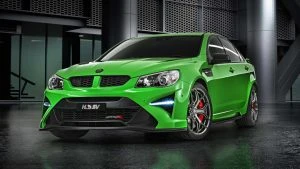
Holden HSV
Over the last decade there have been a few car manufacturers who have pulled out of selling cars in Australia. But, as those leave, there have also been numerous new marques who have arrived on the scene, which is great to see. Let’s not forget the old faithful marques, who are the manufacturers like Toyota, Honda, BMW and Porsche who have been selling cars in Australia for three decades or more. So what’s changed over the last ten years?
Over this last decade we have had to say goodbye to Holden – perhaps the saddest exit. The company was founded in 1856 as a saddlery manufacturer in South Australia, only to be wound up over the last year or so. The Holden roots in Australia have run very deep.
Chery made its arrival in 2011 and stuck around for a few beers and was off again in 2016. Chery once sold Australia’s cheapest new car for under $10k.
During the last decade, Dodge wrapped things up as well, though we still see the RAM logo in the form of the RAM Trucks that are sold new in Australia. A RAM Truck is the king of the Ute/light truck world.
Equally as sad, for some, as the vanishing of Holden has been the cessation of the awesome line of HSV (Holden Special Vehicles) and FPV (Ford Performance Vehicles) muscle cars. Oh how things change when people get a whiff of the climate change spin and big money opportunities with such amazing “clean” vehicles like EVs.
One luxury marque that made a brief appearance was Infiniti. Only recently, we’ve waved goodbye to this very classy and elegant line of cars that for some reason struggled to make their way into a buyer population who were stayed in their buying habits. Some of the Infiniti cars were seriously quick, had unique style and were reliable and comfortable.
2012 saw Opel opening many showrooms across Australia. The new Opel Astra and Opel Insignia cars were quite stylish cars, though they only managed a few sales. They too had a few beers and then folded up a year or two later.
Proton cars also came onto the scene in 2012 and sold a few hundred cars, however the aging models did not sell well in 2017 at all, so they were axed. There are rumours of them making a comeback with a new range of cars under Geely’s ownership.
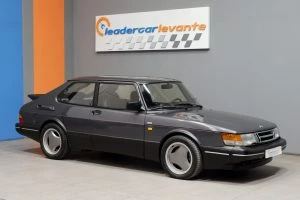
1991 Saab 900 Turbo 16 S
Another very sad day in the last decade of the Australian and global motoring industry was when Saab were forced to wrap up. I miss their individuality and the range of powerful four-cylinder, turbocharged engines. Australia has also said goodbye to Smart cars, a range of tiny city cars that were made by Mercedes. They never sold well.
The new popular car marques that have entered the Australian car market over the last few years has been: Genesis, Great Wall, Haaval, LDV, Mahindra, MG, RAM Trucks and Tesla. Most of these are of Asian origin.
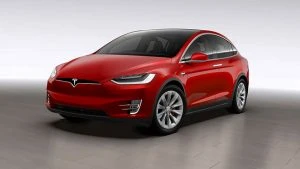
Tesla
Cars For “When you get to my age!”
“When you get to my age…” is a statement commonly made by those of us who may well be getting on in years. Older drivers will likely have more to consider when they come to buying themselves a new car. The need for lots of power may not be such a deciding factor either, and comfort and safety might be the attributes you’d be needing instead. It can also be a fun time buying the new car because you haven’t got all the family commitments to keep in the back of your mind, which would otherwise have swayed your choice of car in the past.
The list of new cars below has been put together with the ‘oldies’ in mind but it by no means is definitive. It is nice to have a practical car which will take the grandkids out to the park or off to the zoo, but these cars also have comfort, reliability, decent space, good safety features, easy infotainment technology and good climate controls. You’ll also find that the following cars are pretty economical and reasonably easy to get in and out of.
The Peugeot non-commercial range of cars are fine cars with style, comfort and practicality. They offer five-star safety and good pricing. Who says motoring has to be boring!
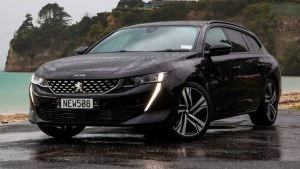
Peugeot 508 Wagon
Toyota’s Camry, Corolla, or RAV4 models are well-priced, safe, efficient and reliable. Lexus models are premium Toyota cars with lavish comfort, excellent reliability, economy and safety.
The Subaru Impreza or Forester are a good go to car for practicality. Maybe you have a dog or need comfort and AWD traction. Their efficiency, safety and reliability have always been good.
Volvo’s new S60, XC60 or XC40 are sensationally comfortable, safe and lovely to drive.

Volvo XC40
Mercedes Benz B-Class range are a great package for comfort and practicality. The style is hard to beat, and they also have the amazing big infotainment screens that wowed the world.
Honda Civic or Accord cars are hugely efficient, reliable and comfortable cars.
Citroen C3, C3 Aircross or C5 Aircross are remarkably comfortable, practical and look cool.
Hyundai Kona has electric power and comfort leading the way, with practicality to boot.
Jaguar’s XE is a lovely car with everything an ‘oldie’ could wish for.
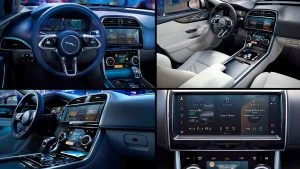
Jaguar XE
Renault has the Captur model range that provides classy SUV looks, outstanding comfort and safety, practicality and nice solid driving dynamics.
Skoda’s entire range of cars are comfortable, well-priced and spacious. Superb models are very stylish and they come in sedan and wagon. There is a model for everyone.
Nissan Qashqai and X-Trail variants are very comfortable, safe and practical; they also offer one of the better SUVs in AWD form with decent go anywhere ability.
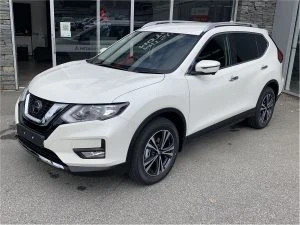
Nissan X-Trail
Kleva Kluger Is A Hefty Hybrid.
Toyota’s near twenty year old Kluger nameplate is joining the Toyota family of Hybrids. The big petrol powered machine, which has never had a diesel option, weighs in at a hefty two thousand kilos (dry) in its forthcoming Hybrid form. It will become the eighth Hybrid for the Japanese company.
The Kluger will come in 2WD or AWD petrol, or AWD Hybrid, and the Hybrid has the Toyota 2.5L petrol, whilst the Kluger stays with the familiar 3.5L V6 capacity in a new engine block. There willbe three trims levels, with the GX 2WD petrol starting from $47,650, the GXL 2WD petrol from $56,850, and Grande 2WD petrol from $68,900. Move to AWD and pricing runs at: GX AWD petrol from $51,650,
GXL AWD petrol from $60,850, and Grande AWD petrol from $72,900. The Hybrid range starts from $54,150 for the GX AWD hybrid, $63,350 for the GXL AWD hybrid, and $75,400 for the Grande AWD hybrid. Premium paint is a $675 option, with the Grande offering a rear seat entertainment system at $1,500. Sean Hanley, the Toyota Australia Vice President Sales and Marketing, said the addition of a hybrid option to one of Australia’s favourite family SUVs demonstrated Toyota’s commitment to driving sustainability forward. “The popularity of SUVs continues to grow and the new Kluger hybrid models mean that families can have all the space, comfort, refinement and versatility of a large SUV with a low environmental impact. In addition to that, the stylish new look, improved safety and high level of advanced technology makes the Kluger the perfect SUV for the modern family.
Sean Hanley, the Toyota Australia Vice President Sales and Marketing, said the addition of a hybrid option to one of Australia’s favourite family SUVs demonstrated Toyota’s commitment to driving sustainability forward. “The popularity of SUVs continues to grow and the new Kluger hybrid models mean that families can have all the space, comfort, refinement and versatility of a large SUV with a low environmental impact. In addition to that, the stylish new look, improved safety and high level of advanced technology makes the Kluger the perfect SUV for the modern family. Power comes from the 2.5L four and a pair of electric motors up front, backed by a single rear mounted engine. Toyota says the Hybrid’s combined power is 184kW, with the petrol engine contributing 142kW itself. Torque isn’t quoted for the Hybrid, however 242Nm is the 2.5L petrol engine’s figure and emissions of 128g/km. Jump to the 3.5L and 218kW is backed by 350Nm with drive being passed through a new eight speed auto.
Power comes from the 2.5L four and a pair of electric motors up front, backed by a single rear mounted engine. Toyota says the Hybrid’s combined power is 184kW, with the petrol engine contributing 142kW itself. Torque isn’t quoted for the Hybrid, however 242Nm is the 2.5L petrol engine’s figure and emissions of 128g/km. Jump to the 3.5L and 218kW is backed by 350Nm with drive being passed through a new eight speed auto.
The Hybrid has an electronic continuously variable transmission (e-CVT). The e-Four AWD system allows up to 100 per cent of drive to be sent through the front wheels or up to 80 per cent through the rear, depending on the conditions being driven in. This Dynamic Torque Control AWD system, which effectively disconnects the rear diff when AWD isn’t required, will be available in the GX and GXL. The Grande also receives a torque vectoring system, splitting torque to left or right as required. There will be three driving modes too, with Eco, Normal, and Sport offering a breadth of choice. Also included in the AWD models is a terrain adjustable program for Rock and Dirt, Mud and Sand soft-roading. Underneath the wheelhouse, the new Kluger is built on an updated chassis, called Toyota New Global Architecture or TNGA platform. The wheelbase is increased by 60mm longer wheelbase as is the overall length. It’s also somewhat broader than the current 2021 model for more interior room and stability on road. The suspension has been redesigned with multilink front and rear setups, with better overall ride quality, better handling, and better behaviour under braking conditions. Bigger discs at 340mm front and 338mm add their presence.
Underneath the wheelhouse, the new Kluger is built on an updated chassis, called Toyota New Global Architecture or TNGA platform. The wheelbase is increased by 60mm longer wheelbase as is the overall length. It’s also somewhat broader than the current 2021 model for more interior room and stability on road. The suspension has been redesigned with multilink front and rear setups, with better overall ride quality, better handling, and better behaviour under braking conditions. Bigger discs at 340mm front and 338mm add their presence.
An exterior revamp sees a lessening of the heavily squared-jaw look, with slim LED headlights and taillights, with the front fenders rolling inwards slightly at the top for a visual weight reduction. There is a new line for the rear wheel arches, with a sinuous curve rolling up from the doors that reminds of the current IndyCar rear structure. Wheels themselves will be 18 inch alloys on the GX and GXL, and bespoke Chromtec 20 inch alloys for the Grande. The increase in space means increased comfort and Toyota adds in sliding and 60/40 split centre row seats, with the seven seater having 60/40 split fold also. Trim material finish has gone up a grade with soft touch dash materials, a higher quality cloth trim in the GX, and faux leather for the GXL. That grade also has gained heated front pews. GX and GXL have an 8.0 inch touchscreen, Android and Apple compatibility with DAB and Bluetooth, plus satnav for the GXL along with tri-zone climate control. Grande adds in a sunroof, HUD, and an 11 speaker audio system from JBL.
The increase in space means increased comfort and Toyota adds in sliding and 60/40 split centre row seats, with the seven seater having 60/40 split fold also. Trim material finish has gone up a grade with soft touch dash materials, a higher quality cloth trim in the GX, and faux leather for the GXL. That grade also has gained heated front pews. GX and GXL have an 8.0 inch touchscreen, Android and Apple compatibility with DAB and Bluetooth, plus satnav for the GXL along with tri-zone climate control. Grande adds in a sunroof, HUD, and an 11 speaker audio system from JBL.
GX has dual zone, auto headlights and rain-sensing wipers as standard. Five USB ports make for family friendly smart usage. The increased wheelbase adds up to increase the cargo and third row space as well. Also upped is safety, with Toyota’s Safety Sense gaining traffic sign recognition, intersection turn assist, and emergency steering assist across the three, backing up the already substantial safety package.
The current expected release date for Australia is June.
Australian Car Sales Continue The Upwards Swing.
VFACTS and the FCAI have released the sales figures for March of 2021 and it’s good news. March 2021 saw 100,005 units moved, an increase of 18,315 over March of 2020. In a year to date sales sense it’s 263,648, up from 233,361 for the same time last year.
SUV sales were up 32 per cent and Light Commercial vehicles were up by 28 per cent. Eight of the top ten selling vehicles for the month were SUVs or Light Commercials, driven by increasing demand from the Private buyers.
Category wise, the passenger segment went down from 21,783 to 21,360. The SUV figures were 51,705 compared to 39,162 in March 2020. LCVs were 23,255, up from 18,165 in March 2020.
In the Passenger car segment Hybrids saw a slight increase, with 2,658, up from 2,441 in March 2020. Hybrid SUVs also saw an increase, with 2,190 in March 2020 up to 3,890 this year. PHEV SUVs doubled from 119 to 258.
For the Light Cars (under $25K), MG’s MG3 took the crown, with 1,238, an increase of over 30%. Third place was a real battle with Suzuki Swift (471), Kia Rio (452), and Suzuki Baleno (432) making a good sales fight, whilst in between was the Toyota Yaris on 636.
Small Cars (under $40K) and Toyota’s Corolla was under pressure from Hyundai’s i30. The Corolla moved 2,892 against 2,514. Third was tight with the Mazda3 just pipping the Kia Cerato, with 1,577 to 1,453. In the plus $40K range it was a battle between the German duo of BMW and Mercedes-Benz. The A-Class stole first on 358, just nudging the 1 Series on 340. The 2 Series Gran Coupe took third on 222.
For the Medium segment it was the Toyota Camry out in front in both the under and over $60K bracket. 852 units moved, ahead of the BMW 3 Series on 567, and the Mercedes-Benz C-Class on 364. Camry, though, was down substantially from 2020, with 1,332 last year.
Kia’s Stinger continued to win the Large Sedan, with 173, down by just two from last year. Porsche’s new Taycan, a fully Electric Vehicle, entered with 161, six ahead of the Mercedes-Benz E-Class.
Kia also outclassed the competition in the People Mover segment, with the Carnival reaching 616, up from 475 in March 2020. Honda’s Odyssey consolidates second with 162, up from 130.

Volkswagen snared third with its new Multivan for 121. In the over $60K segment it was Mercedes, Mercedes, and Toyota, with the V-Class (42), Valente (24) and Granvia (22), duking it out.
There’s been a change in the Sports car segment though. Ford’s Mustang still sold the most with 130 in the under $80K segment, however was outsold by the Mercedes-Benz in the over $80K by the C-Class Coupe and Convertible on 139. The 4 Series from BMW snared 110 for third in both segments.
Moving into the SUV segment and in the Light SUV category Mazda’s CX3 pummeled the opposition in the sub-$40K bracket with 1,744. Toyota’s Yaris Cross slid quickly into second on 846. For third it was another tight battle with Volkswagen’s T-Cross (655) edging out the Hyundai venue and Kia’s new Stonic on 636 and 624.
For the under $40K Small SUVs the Chinese made MG ZS stole the show on 1,510. Hyundai’s recently revamped Kona saw 1,462, just ahead of the Mazda CX-30 on 1,225. Nissan’s Qashqai was the only other entrant into the 1,000 club, squeaking in on 1,003.
Above $40K and Audi’s Q3 found 852 homes, ahead of the Volvo CX40 with 416. 279 and 249 went to Germany, with the X1 from BMW and GLA-Class from Mercedes. Mazda’s CX-5 gave the RAV4 a shake in the Medium sub-$60K, with Toyota selling 3,522 over the Mazda’s 3,022. Nissan’s X-Trail performed solidly for 1,932, just ahead of Subaru’s Forester with 1,439. Mitsubishi’s Outlander 1,085, just ahead of Honda’s CR-V on 972.
In the plus $60K bracket, only Mercedes cracked the 600 mark on 607 for the GLB. The GLC-Class wagon was a distant second with 374, with Audi Q5 on 336. The Lexus NX and BMW X5 went nose to nose on 295 and 291.

In the Large SUVs and under $70K it was Subaru’s outgoing and incoming Outback with 1,341, ahead of the 1,211 for Toyota’s Prado. 1,179 is the number for the Isuzu M-UX. Mitsubishi’s Pajero Sport sold 886, whilst their ancient Pajero, due to be cancelled at the end of the year, sold 292.
Over $70K and it was the X5 on 309. Behind it was some close infighting with the Lexus RX (185), Range Rover Sport (181), and GLE-Class wagon (176) providing stiff competition for each other. Above that it’s a two horse race in the Upper large under $100K, with the LandCruiser and Patrol on 2,244 and 305, selling nearly eight times as many than the full field in the over $100K bracket.
In the ute segment, the 4×4 pickup and cab-chassis bracket had HiLux on 4,068 ahead of Ford Ranger with 3,710, continuing the Japanese brand’s number one position. Mitsubishi’s 4×4 Triton moved 2,223 for third. Isuzu’s D-Max was fourth on 1,338, ahead of the Mazda BT-50 and sibling under the skin, on 1,177.
Notable in those figures is the rise of the sharply priced Chinese built MG range, and the continued growth of non-PHEV Hybrids. Overall for March 2021, Toyota sold 21,319, with Mazda on 10,785. They were the only two brands to see double-digits for the month. Hyundai continues to outpace its Korean sibling, with 6,852 over 5,802. Mitsubishi moved 6,430 whilst Nissan sold 4,559, under the 5,977 of Ford. MG? 3,303 and ahead of Honda.
